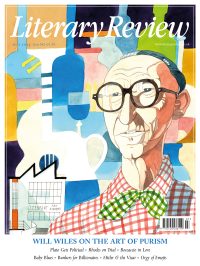Paul Genders
Art Imitating Life
Happiness and Love
By Zoe Dubno
Doubleday 288pp £16.99
During the second half of the 20th century, New York’s Lower East Side was where Bebop brushed shoulders with Abstract Expressionism, Andy Warhol staged significant happenings with the Velvet Underground and Jean-Michel Basquiat first transferred his work from the streets to gallery spaces. However, rocketing rents proved that being the capital of cool comes with a cost. Zoe Dubno’s debut novel, Happiness and Love, tells us in no uncertain terms that, by the 2020s, the neighbourhood’s old creative energy had all but disappeared.
Eugene is a ‘multidisciplinary artist’; his wife, Nicole, is a curator who puts on what the unnamed narrator, a journalist and scriptwriter, calls ‘brainless exhibitions … about the intersection of this and that’. The narrator was once in awe of the couple, believing them to be ‘the very center of the genuine vibrant artistic universe’ (there is frequent recourse to mocking italics). After boarding in their luxurious Bowery apartment and enjoying the networking opportunities that came her way, she saw through the hype around these ‘completely ridiculous people’ and escaped to London for several years.
Reluctantly back in New York due to visa trouble, she’s thrown in again with the couple and their clique as a result of the suicide of her friend Rebecca, a ‘sort of actress’. Unlike the rest of the cream of the city’s creative class, Rebecca was relatively dear to the

Sign Up to our newsletter
Receive free articles, highlights from the archive, news, details of prizes, and much more.@Lit_Review
Follow Literary Review on Twitter
Twitter Feed
Literary Review is seeking an editorial intern.
Though Jean-Michel Basquiat was a sensation in his lifetime, it was thirty years after his death that one of his pieces fetched a record price of $110.5 million.
Stephen Smith explores the artist's starry afterlife.
Stephen Smith - Paint Fast, Die Young
Stephen Smith: Paint Fast, Die Young - Jean-Michel Basquiat: The Making of an Icon by Doug Woodham
literaryreview.co.uk
15th-century news transmission was a slow business, reliant on horses and ships. As the centuries passed, though, mass newspapers and faster transport sped things up.
John Adamson examines how this evolution changed Europe.
John Adamson - Hold the Front Page
John Adamson: Hold the Front Page - The Great Exchange: Making the News in Early Modern Europe by Joad Raymond Wren
literaryreview.co.uk